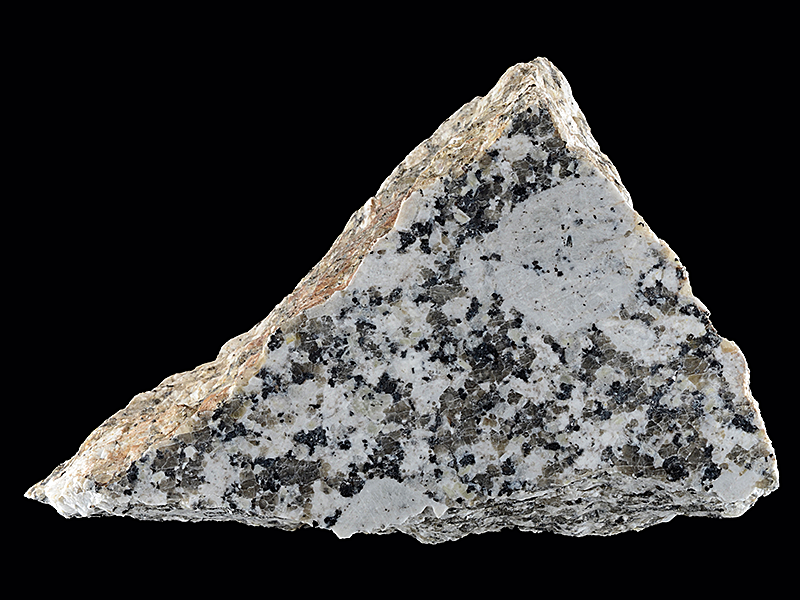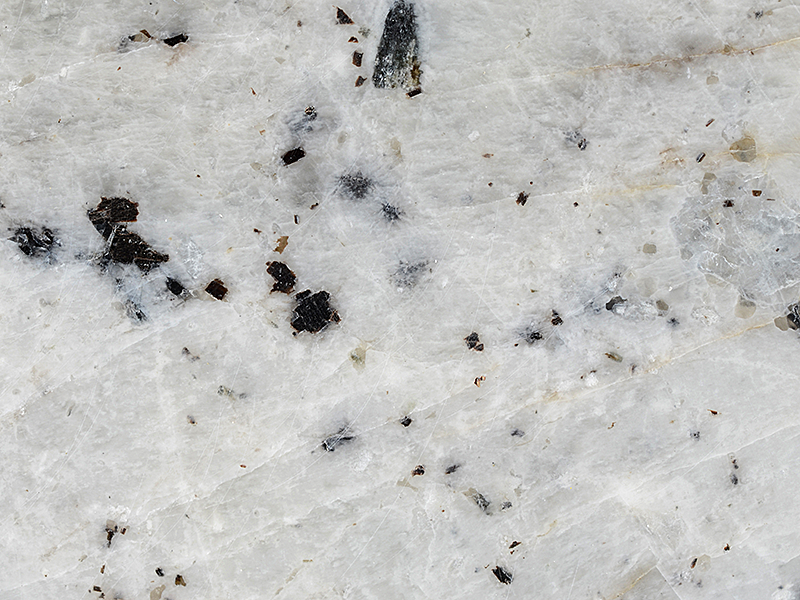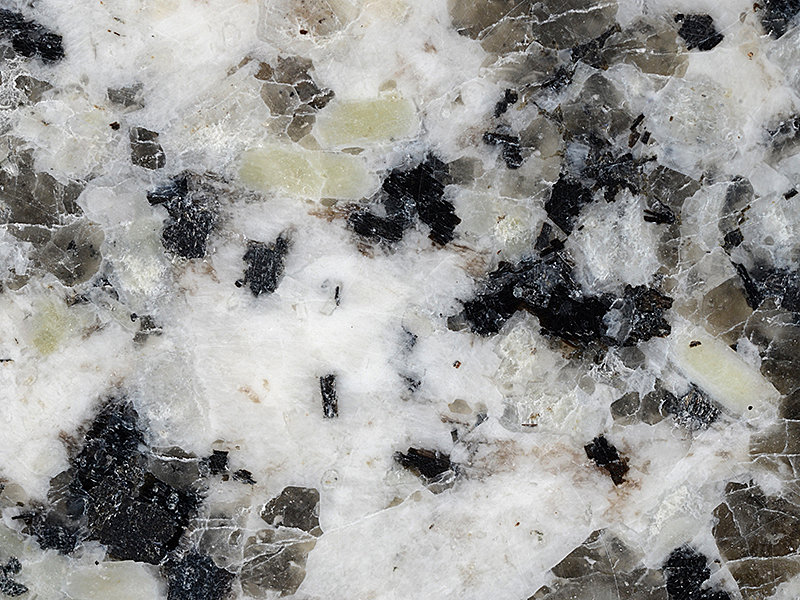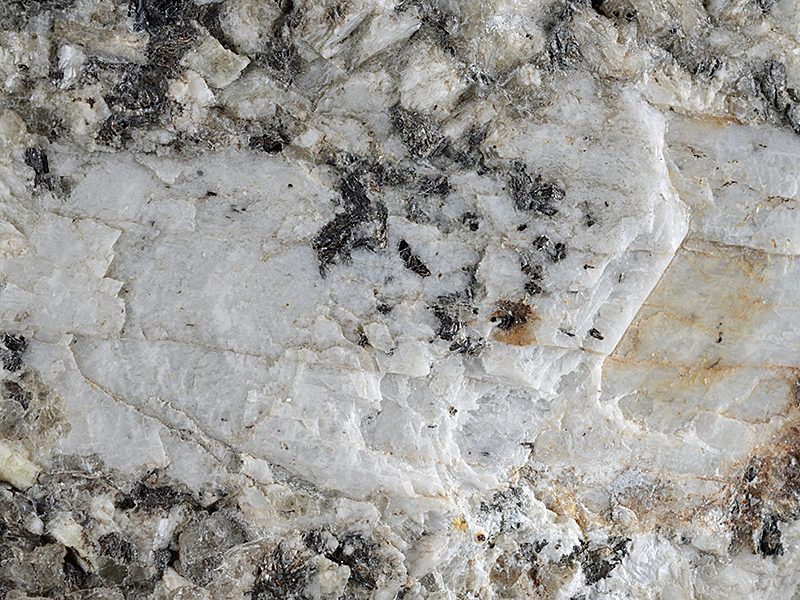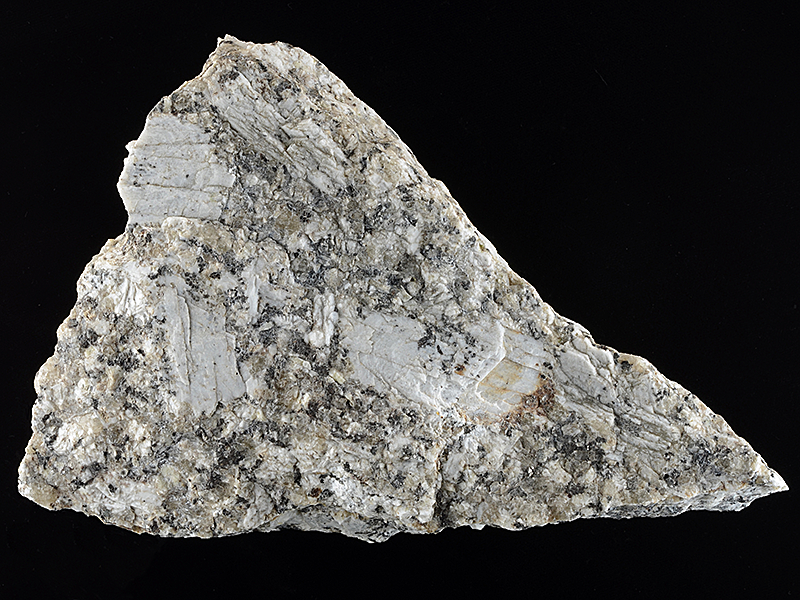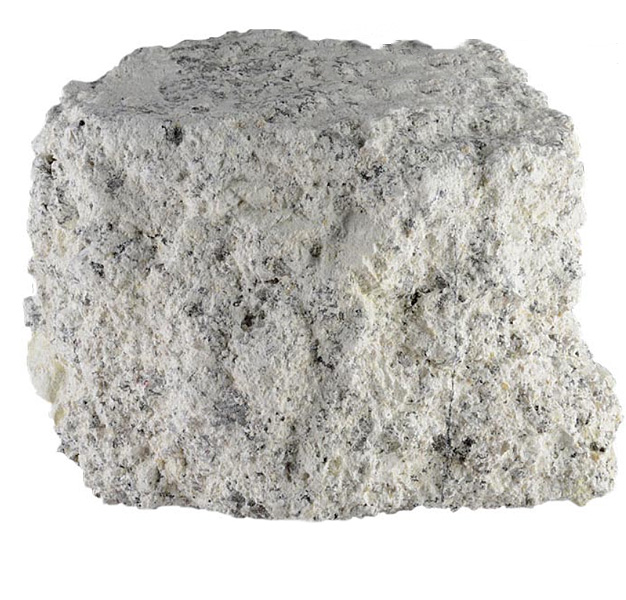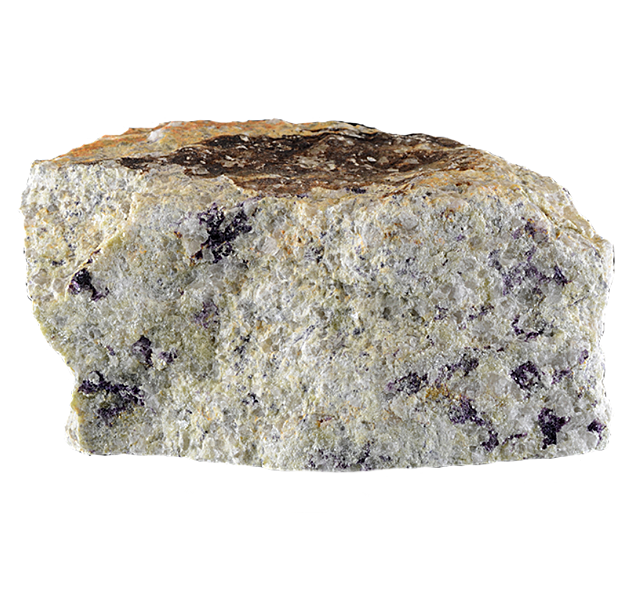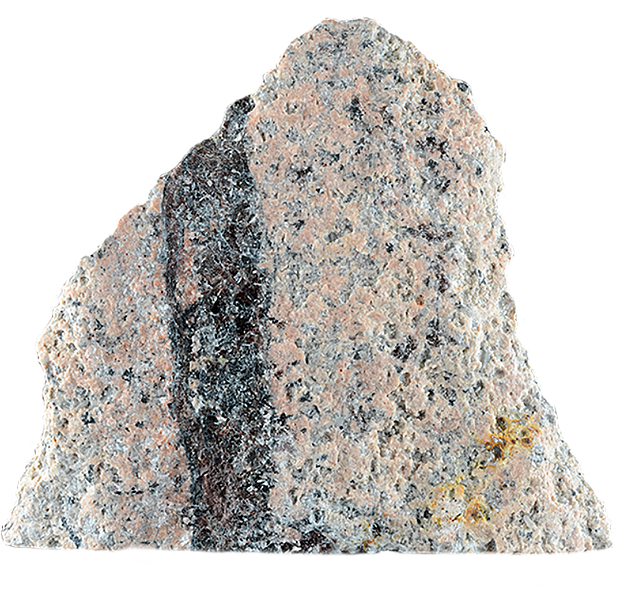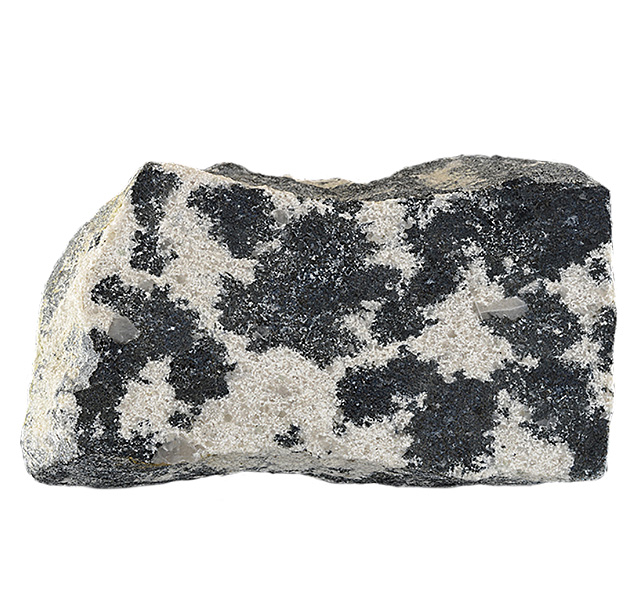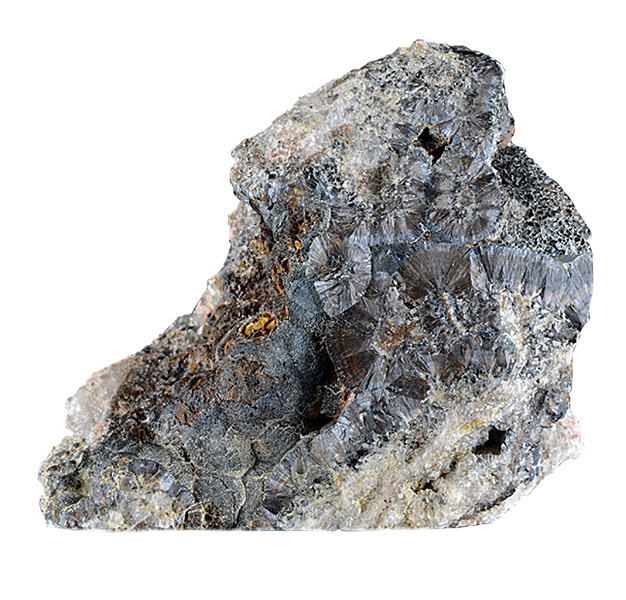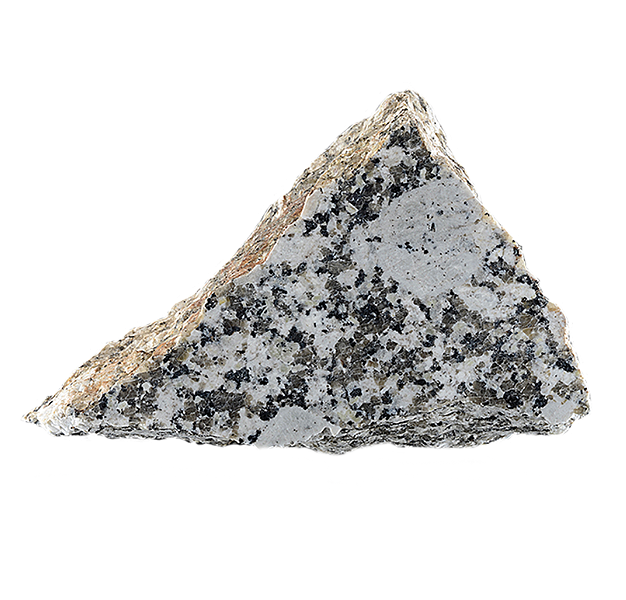
Fact sheet
Large and abundant orthoclase feldspar crystals dominate this sample (the thin section in particular). Such phenocrysts indicate that crystallisation of this magma began prior to intrusion at the current crustal level. The finer-grained siderophyllite (biotite), tourmaline and plagioclase all crystallised later. Note the small amount of cordierite in this sample - evidence for magma contamination. The cordierite probably recrystallised from digested Devonian metasediments.
Look for characteristic pale green and yellow alteration in and around the cordierite - termed pinite. Rotation 3 should help you get started. Note the higher relief of cordierite compared to quartz.
Other features of note - sericitic alteration of plagioclase, veinlets of muscovite invading the orthoclase, and the exceptionally abundant inclusion suite in the siderophyllite (biotite) of the granite. In comparison, the siderophyllite that occurs as inclusions in orthoclase is different!
A tricky question - which crystallised first - siderophyllite or tourmaline?
A case study of the St Austell granite complex in Cornwall, England, illustrating the range of rocks associated with a granite intrusion. The earliest part of the complex is a siderophyllite (biotite) granite containing muscovite and tourmaline typical of a SW England granite, with many primary magmatic features.
This early intrusion was followed by the intrusion of an evolved volatile-rich magma which was the driving force behind a series of intense hydrothermal processes as volatiles escaped from this magma and helped to establish an extensive alteration halo (aureole). Boron, fluorine and lithium (as well as water) played major roles in the formation of the second intrusion and in the associated hydrothermal processes. Igneous activity lasted around 18 million years from 282 Ma (siderophyllite granite) to 265 Ma (fluorite granite).
